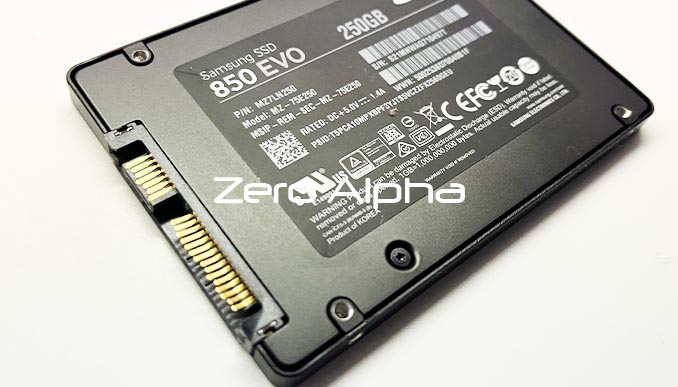Samsung 850 Evo 250GB SSD Data Recovery
The Samsung 850 Evo 250GB SSD has been a popular choice among consumers and professionals alike due to its reliable performance and competitive pricing. Despite its reputation for durability and speed, SSDs like the 850 Evo are not immune to data loss. This article explores the challenges and common issues faced when attempting data recovery on the Samsung 850 Evo 250GB SSD.

Understanding SSDs and Data Recovery
Before diving into the specifics, it’s essential to understand that SSDs (Solid State Drives) differ significantly from traditional HDDs (Hard Disk Drives). SSDs store data in flash memory chips, making them faster and more durable because they have no moving parts. However, this technology also introduces unique challenges in data recovery, particularly due to the following issues.
1. NAND Flash Memory Wear and Degradation
NAND flash memory, used in SSDs, has a limited number of write/erase cycles. Over time, the memory cells wear out, leading to degradation and eventual failure. The Samsung 850 Evo is equipped with advanced technology to prolong its lifespan, but it is still susceptible to the following issues:
- Read/Write Errors: As the NAND flash memory wears out, it may cause read/write errors, making data inaccessible or leading to data corruption.
- Bad Blocks: Over time, certain blocks of memory can fail, resulting in bad blocks where data cannot be reliably stored or retrieved.
Recovering data from an SSD with worn-out memory cells can be challenging, as the data may be partially or completely unreadable, and traditional data recovery methods may not be effective.
2. Firmware Corruption
Firmware plays a critical role in managing the operations of an SSD, including wear leveling, error correction, and data management. However, firmware issues can severely impact the drive's functionality:
- Firmware Crashes: A corrupted or malfunctioning firmware can cause the SSD to become unresponsive or fail to be recognized by the system.
- Failed Updates: Incomplete or improper firmware updates can corrupt the SSD's firmware, leading to data inaccessibility.
Data recovery from an SSD with firmware issues often requires specialized tools and techniques to either repair or bypass the corrupted firmware.
3. Controller Failures
The SSD controller is responsible for managing data storage and retrieval processes. In the Samsung 850 Evo, this controller is an essential component for the drive's operation. Common problems include:
- Controller Malfunctions: A malfunctioning controller can prevent the SSD from being detected by the system, rendering data inaccessible.
- Overheating: SSD controllers can overheat, especially under heavy use or poor ventilation conditions, potentially leading to permanent damage and data loss.
Data recovery in cases of controller failure usually involves complex procedures to either repair the controller or transfer the NAND chips to a working SSD for data extraction.
4. Power Loss and Electrical Issues
While SSDs are more resistant to physical shock compared to HDDs, they are still vulnerable to electrical issues:
- Power Surges: Sudden power surges can damage the SSD's circuitry, leading to data loss or corruption.
- Sudden Power Loss: Unexpected power loss can result in incomplete data writes, causing data corruption or making the SSD unbootable.
Recovering data from an SSD affected by power issues can be problematic, especially if the damage extends to the SSD’s internal components, requiring advanced recovery techniques.
5. TRIM and Garbage Collection
TRIM and garbage collection are features that help maintain SSD performance by managing and erasing unused data blocks. However, these features pose unique challenges for data recovery:
- TRIM Command: When a file is deleted, the TRIM command informs the SSD that the data is no longer needed, allowing it to be erased permanently. This makes traditional data recovery methods less effective since the data may be erased beyond recovery.
- Garbage Collection: This process periodically cleans up unused data blocks, which can lead to permanent data loss if crucial data is incorrectly identified as no longer needed.
Data recovery in the presence of TRIM and garbage collection requires specialized knowledge and tools to work around these mechanisms and attempt to recover lost data.
6. Logical Failures
Logical failures refer to software-level issues that prevent access to data stored on the SSD. These can include:
- File System Corruption: Corrupt file systems can make the SSD unreadable by the operating system, often resulting from improper shutdowns or software errors.
- Accidental Deletion: Users may unintentionally delete important files or format the SSD, leading to data loss.
While some logical failures can be addressed with data recovery software, the effectiveness varies, especially if TRIM has already been executed on the deleted data.
7. Encryption and Data Security
Many SSDs, including the Samsung 850 Evo, support hardware encryption to protect user data. However, this feature can complicate data recovery:
- Encryption Key Loss: If the encryption key is lost or forgotten, recovering the encrypted data can be nearly impossible.
- Encryption Software Failure: Failures in the encryption software can lead to data inaccessibility, even if the SSD itself is physically intact.
Recovering data from an encrypted SSD without the correct key or credentials can be extremely difficult and may require specialized decryption techniques.
Conclusion
The Samsung 850 Evo 250GB SSD, while reliable, presents several unique challenges when it comes to data recovery. Issues such as NAND flash wear, firmware corruption, controller failures, and the effects of TRIM and garbage collection all contribute to the complexity of recovering lost data. Users experiencing data loss on their SSDs should be aware of these challenges and consider professional data recovery services, which possess the specialized tools and expertise needed to maximize the chances of a successful recovery. To mitigate the risk of data loss, regular backups and proper handling of the SSD are crucial preventive measures.
Samsung SSD 850 Evo 250GB MZ7LN250 Data Recovery Case Log
09Jun24: This ssd was from a pc that was in very bad condition. The sata connector of the ssd is damaged but all data was able to be recovered.
